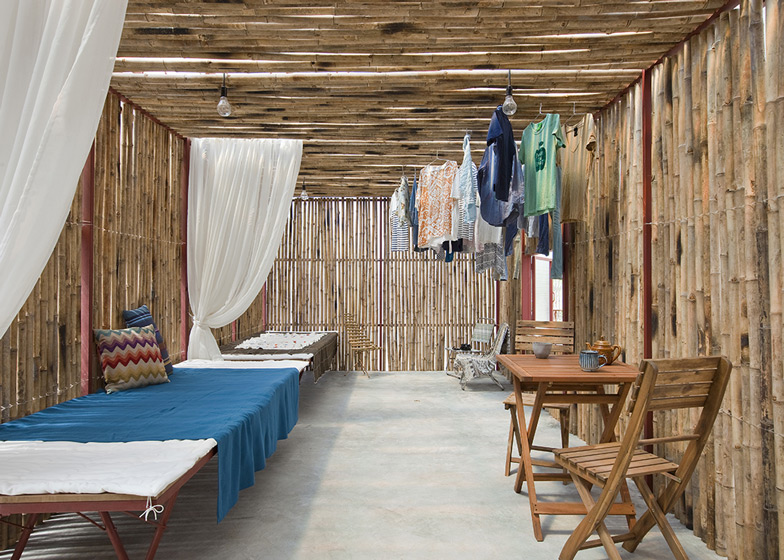Alternatives to Concrete for Sustainable and Modern Homes
Concrete is widely used in construction, but several alternative materials offer comparable strength, better sustainability, or unique design benefits. Below are practical substitutes, each used in real-world projects that showcase their architectural potential.
Rammed Earth
Rammed earth walls are dense, durable, and offer natural insulation. The Great Wall of Western Australia, designed by Luigi Rosselli Architects, uses this material to create a long, curving facade that connects 12 temporary residences for cattle workers, blending into the desert landscape.
Bamboo
Bamboo is lightweight, strong, and renewable. Vo Trong Nghia Architects used it along with polycarbonate and steel to build modular, low-cost homes in Vietnam that are adaptable to soft terrain and easy to assemble, offering an affordable housing solution.
Glass
Glass allows for maximum natural light and seamless indoor-outdoor transitions. In Montreal, Maurice Martel Architecte built a glass pavilion as a house extension, featuring floor-to-ceiling glazing and skylights for panoramic views and daylight exposure.
Wood Logs
Log construction offers thermal efficiency and suits natural settings. A self-built off-grid log cabin in Ontario demonstrates how wood logs can be used to create simple, rustic housing integrated into forested landscapes.
Corten Steel
Corten steel, known for its weathered appearance and durability, was used by Mork-Ulnes Architects for a hillside residence with an angular design. The steel exterior develops a protective patina over time, enhancing its visual character and blending with natural surroundings.
Hempcrete
Hempcrete is a mix of hemp fibers and lime, offering insulation and moisture regulation. Martens Van Caimere Architecten used it in Belgium to renovate a house by applying it to exterior walls for added insulation and a textured, natural finish.
Recycled Plastic
Recycled plastic bottles can be repurposed into structural panels. JD Composites built a three-bedroom home in Nova Scotia using over 600,000 bottles, processed into foam panels reinforced with fiberglass and UV-resistant coatings, providing strength and weather resistance.
Mycelium
Mycelium, the root-like structure of fungi, can be molded into biodegradable construction materials. Studio The Living used it to build the MoMA PS1 pavilion in New York, where bricks made from organic waste and mycelium formed a sculptural, light-reactive structure.
More Concrete Alternatives:
- Straw Bale Construction – Uses compacted straw bales within a frame for excellent insulation and low embodied energy.
- Adobe – Sun-dried bricks made from earth, clay, and straw, ideal for hot, dry climates and traditional structures.
- Ferrock – A concrete-like material made from recycled steel dust and silica. It’s carbon-negative and stronger than concrete in some conditions.
- AshCrete – A concrete alternative that uses fly ash (a byproduct of coal combustion) instead of Portland cement.
- Papercrete – A lightweight mix of recycled paper, cement, and water, often used for non-load-bearing walls with high insulation.
- Earthbags– Polypropylene sacks filled with soil and stacked to form thick, durable walls, often used in sustainable, low-cost buildings.
- Recycled Rubber (Tire Bricks/Pavers) – Ground-up tires formed into blocks or pavers, offering shock absorption and weather resistance.
- Mass Timber (e.g., CLT – Cross-Laminated Timber) – Engineered wood panels used for structural applications; lighter than concrete and sequesters carbon.
- Plastic Waste Blocks – Compressed or molded plastic waste turned into bricks, panels, or blocks for low-cost construction.
- Magnesium Oxide Cement (MgO) – A low-carbon cement alternative with mold- and fire-resistant properties, used for walls and panels
The post Alternatives to Concrete for Sustainable and Modern Homes appeared first on Homedit.
Categories
Recent Posts










GET MORE INFORMATION















